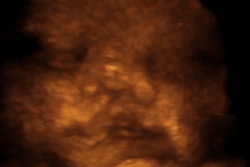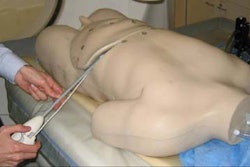(Radiology Review) Radiologists at Children's Hospital Boston in Massachusetts determined that an empty renal fossa on prenatal ultrasound suggests either an ectopic or congenitally absent kidney, and that this finding is often associated with other fetal anomalies. Twenty percent of fetal anomalies involve the genitourinary system and early detection improves patient management, according to Dr. Jeanne S. Chow and colleagues.
To determine the clinical significance of an empty renal fossa, the team conducted a retrospective study of 93 cases with a unilateral empty renal fossa, and found an ectopic kidney in 42% of cases and an absent kidney in 47%. Prenatal and postnatal imaging showed that 34 of the ectopic kidneys were in the ipsilateral pelvis, four were fused to the contralateral kidney, three were cross-fused, one was a horseshoe kidney, and one patient with a congenital diaphragmatic hernia had a kidney in the chest.
"Ten kidneys (11%) originally thought absent were normally located, seven of which were dysplastic, two normal, and one infiltrated by a tumor," the authors reported. Other anatomical abnormalities were demonstrated in 42%, "sometimes involving multiple systems, most commonly genitourinary (29) and cardiovascular (13)." The umbilical cord vessel number was recorded in most cases, but only 12% showed a two-vessel cord.
"The diagnosis of an empty renal fossa is made on prenatal sonography when no kidney is visualized in its normal paraspinous location and the adrenal gland is oriented longitudinally in the renal fossa. When the adrenal gland is shown to be 'lying down,' this indicates renal ectopia or agenesis," they stated. "When the fetal kidney is absent from the renal fossa, the splayed limbs of the adrenal gland collapse on each other." This appearance should not be mistaken for a small or dysplastic kidney, the authors cautioned.
The urologic abnormalities identified in this group of patients included "hydronephrosis, vesicoureteral reflux, primary megaureter, ureteropelvic junction obstruction, contralateral multicystic dysplastic kidney, mesoblastic nephroma, genital anomalies, bladder agenesis, cloacal exstrophy, and posterior urethral valves." Although there were differences in male-female and left-right prevalence, neither was statistically significant.
"The main causes of an empty renal fossa are renal ectopia and renal agenesis. These anomalies are commonly associated with other anomalies, especially involving the genitourinary and cardiovascular systems," the authors concluded. When an empty renal fossa is identified during prenatal ultrasound, they recommend targeted scanning to locate an ectopic kidney and a thorough morphology assessment.
"The Clinical Significance of an Empty Renal Fossa on Prenatal Sonography"
Jeanne S. Chow et al
Department of Radiology, Children's Hospital Boston
300 Longwood Ave, Boston, MA 02115 USA
J Ultrasound Med 2005 (August); 24:1049-1054
By Radiology Review
August 17, 2005
Copyright © 2005 AuntMinnie.com



















